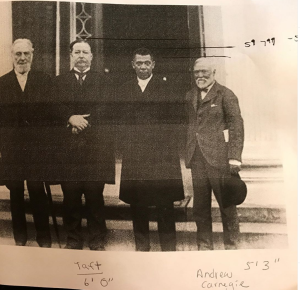As I stated, reference is a big part of creating good art. First, my friend Antwine posed so we could quickly see how tall a seated man would be, that is the approximate height of our subject.
Mr. Tough was 5'10" Next, I posted on my neighborhood Facebook page to look for a man with the same build and height as my subject. That was hard. First, I thought we were doing him much older, and then I received word I should sculpt him in his 50's. I had to have my client define what image they might have that depicts Mr. Tough in his 50's, and we started all over again, looking for another model and creating our reference.
Often when sculpting a deceased loved one, I prefer to have a member of the family pose in the pose if they are about the same height and stature. But things have been going slow with communication, and we need to get going on the project, so I opted for a stranger. I posted on my neighborhood forum to find a man, and neighbors sent me images. I opted for a man younger than 50 and a bit thinner, but we can thicken him up. I'm also noting Mr. Toughs stature or how he should sit or stand. This stature won't change over years, or if it does, it will change only slightly. That is where having lots of reference material for my subject is important.
I set up my model on my bench and took photographs around him, from above and even underneath the bench. These photographs will show me the folds in his suit and how it fits and allow me to refer back to these images for shape and positioning. Here is the thing. If Mr. Tough is in his 50's, his suit would be from that time period. So, I spent a great deal of time trying to figure out what type of suit he would be in and how the design changed from my model's suit. My model's suit is very tight, so loosening up that suit will be a priority, the suit will have larger lapels and he will wear a wider tie.
I often spend a great deal of time researching clothes, for example, the suit of Booker T Washington, or in the case of my newsboy sculpture, I found a pattern from the period, sewed the outfit, and had my model pose with it on. (FYI, old patterns do not have the same markings as new patterns. This made sewing a bit challenging, but it was fun.)
I'm getting very excited about getting my hands in the clay. Stay tuned.
Teachers and students
How do you think the study of clothing and understanding what people wear at certain times in history relates to what is happening in the world?
What did your parents wear, and how was their clothing different?
Does the style of clothing change? What is your favorite style of clothing from the past?
How have school clothes changed over the years? Did you know there was a time when girls could not wear pants to school and boys had to wear hats or ties? When I sculpted the newsboy, I was surprised to learn about the knickers he wore, and if you wore them above the knee, they meant you were young and below the knee meant you were older. There was even a line in a famous musical about if your son buttoned his knickers below the knee- it was sung as if doing so he would be rebellious. Clothes can say a lot.












